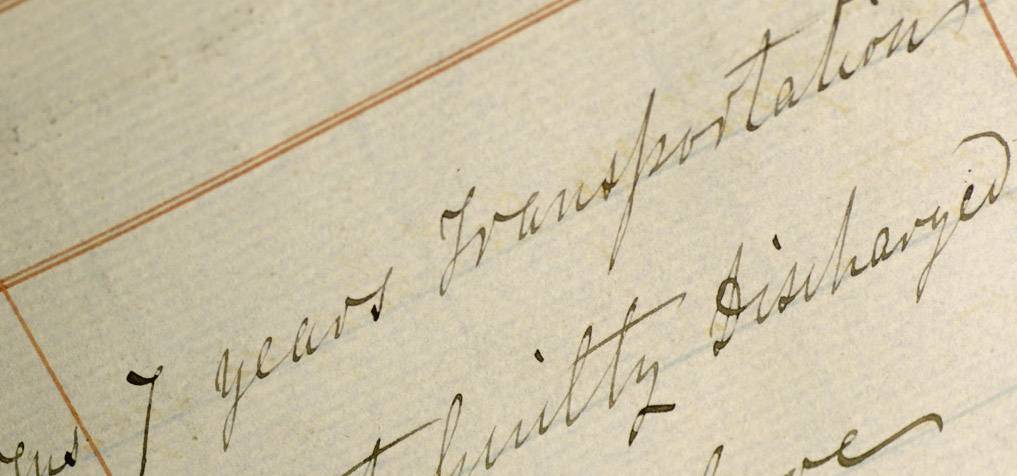Transportation
From the time it opened until the early 1850s, Kilmainham Gaol was used as a depot for convicts from the north-east of Ireland, who had been sentenced to transportation to Australia. Here they would wait before being transferred to a port in either Dublin or Cork, where they would board great convict ships bound for Australian penal colonies. The use of the Gaol in this way was the main reason it was so overcrowded, and prison authorities consistently complained during these years that it was impossible to run the Gaol properly until an alternative depot had been created.
Over 4,000 prisoners were processed through Kilmainham during this time. Most were either petty criminals or political prisoners. The convicts were usually sentenced to seven years, fourteen years, or life. Australia was chosen for its remoteness; it replaced North America as a penal destination after the American Revolution. On arrival, prisoners laboured in public works or were indentured to farm or domestic work. There were also thirteen Female Factories (workhouses) where women were held. Once a convict’s term was up, they were granted a Certificate of Freedom, which allowed them to either stay on in Australia as a free person, or else leave and return homeward.
The sentences of political prisoners were commonly commuted to transportation. This was true for rebels and revolutionaries in England, Scotland, and Canada, as well as Ireland. As early as 1805, less than a decade after Kilmainham Gaol had opened, Michael Dwyer (1771-1815), leader of the Wicklow branch of the United Irishmen, was transported from Kilmainham to Australia, with his family. After his sentence was finished, he joined the police force there.
After the Young Ireland Rebellion of 1848, William Smith O’Brien (1803-1864) and Thomas Francis Meagher (1823-1867) were arrested and held in Kilmainham. They are pictured, probably in the Gaol, here. Smith O’Brien is seated, and Meagher is to his left. Their death sentences were commuted to transportation, and both travelled to Van Diemen’s Land. Smith O’Brien served out his sentence and later returned to Ireland. Meagher escaped and went to America, where he rose through the ranks of the New York Irish Brigade, eventually becoming Acting Governor of Montana.
The practice of transportation to Australia eventually ended due to local Australian opposition. In the eighty years that it had been in place, over 800 convict ships had brought around 164,000 prisoners there. A quarter of this number were Irish. Australian descendants of the prisoners transported from the Kilmainham depot often visit the Gaol today.


